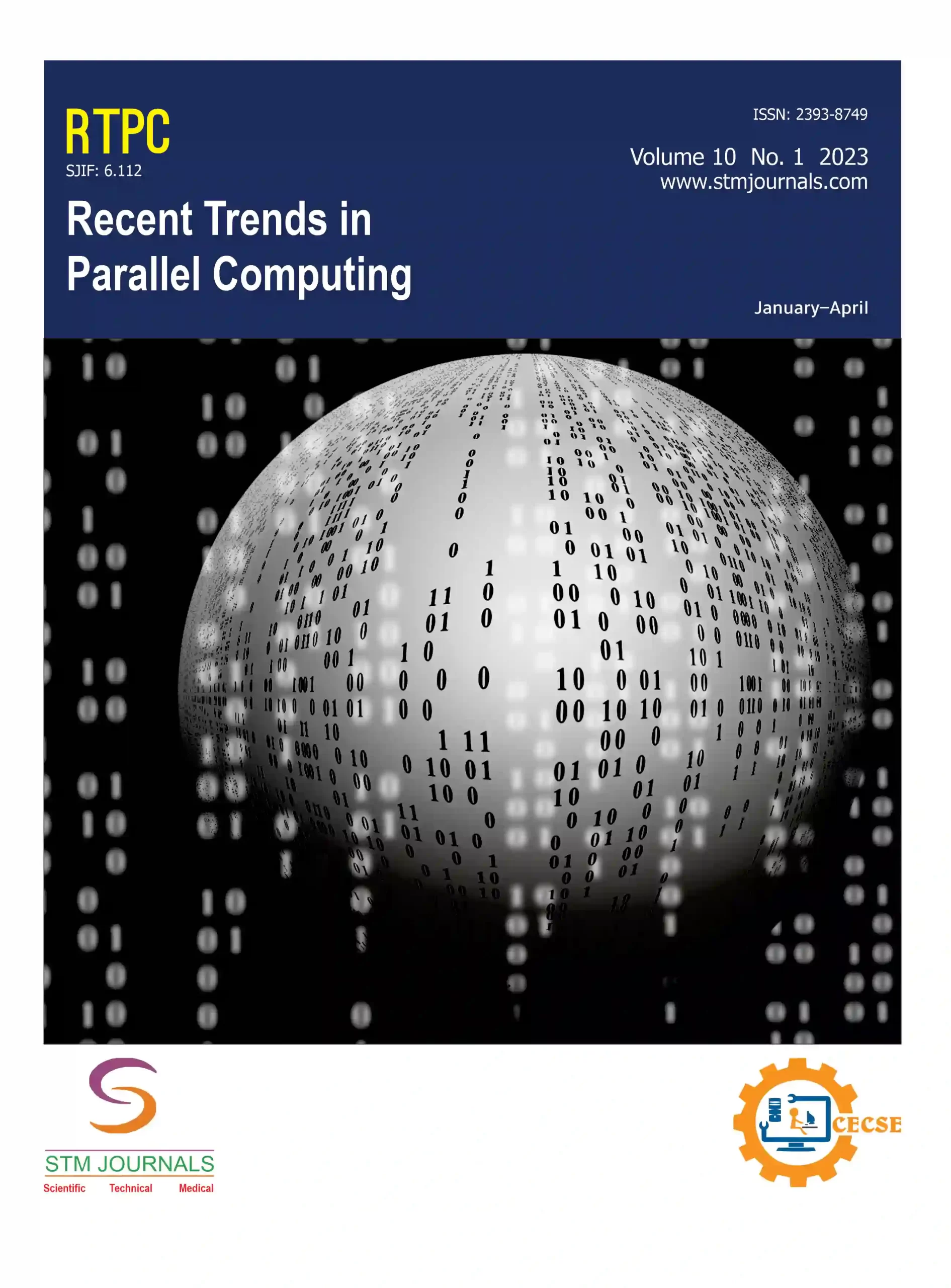[{“box”:0,”content”:”n[if 992 equals=”Open Access”]n
n
Open Access
nn
n
n[/if 992]n
n
n
n
n

n
Shilpa Mahajan
n
- n t
n
n
n[/foreach]
n
n[if 2099 not_equal=”Yes”]n
- [foreach 286] [if 1175 not_equal=””]n t
- Associate Professor Department of Computer Science, The NorthCap University Haryana India
n[/if 1175][/foreach]
n[/if 2099][if 2099 equals=”Yes”][/if 2099]n
Abstract
nCloud computing has rapidly evolved, serving as a cornerstone for storage, information processing, and various applications. Its adoption has surged across enterprises and small businesses alike, offering them efficient means to store and process data. However, alongside its undeniable benefits, the cloud also presents inherent risks to privacy and security, as data traverses and resides on remote servers. Employing tactics such as data encryption, multifactor authentication, access control, and intrusion detection systems, cloud service providers can inspire trust in their customers, guaranteeing the security of their data and the reliability of the cloud service. Thus, it is utmost important to maintain security of data in cloud environment and to ensure privacy of the users as well.
This paper delves into the privacy and security challenges inherent in cloud computing and proposes viable solutions. Ensuring privacy and security in cloud computing is crucial in the current digital environment. By adopting a proactive approach and implementing robust security measures, both cloud service providers and users can mitigate risks and ensure that the cloud remains a secure and trusted platform for storing and processing data. It underscores the significance of encryption, multi-factor authentication (MFA), access controls, and intrusion detection systems (IDS) to fortify the safety of these sectors. Through the adoption of these tactics, cloud service providers can inspire trust in their customers, guaranteeing the security and reliability of the cloud service.
n
Keywords: Cloud computing, privacy and security, multi-factor authentication, information processing, cloud service, intrusion detection systems
n[if 424 equals=”Regular Issue”][This article belongs to Recent Trends in Parallel Computing(rtpc)]
n
n
n
n
n
nn[if 992 equals=”Open Access”] Full Text PDF Download[/if 992] n
nn[if 379 not_equal=””]n
Browse Figures
n
n
n[/if 379]n
References
n[if 1104 equals=””]n
- Xiao Z, Xiao Y. Security and privacy in cloud computing. IEEE communications surveys & tutorials. 2012 Jul 12;15(2):843-59.
- Chen D, Zhao H. Data security and privacy protection issues in cloud computing. In2012 international conference on computer science and electronics engineering 2012 Mar 23 (Vol. 1, pp. 647-651). IEEE.
- Sun Y, Zhang J, Xiong Y, Zhu G. Data security and privacy in cloud computing. International Journal of Distributed Sensor Networks. 2014 Jul 16;10(7):190903.
- Zhou M, Zhang R, Xie W, Qian W, Zhou A. Security and privacy in cloud computing: A survey. In2010 sixth international conference on semantics, knowledge and grids 2010 Nov 1 (pp. 105-112). IEEE.
- Sambangi S, Gondi L, Aljawarneh S. A feature similarity machine learning model for ddos attack detection in modern network environments for industry 4.0. Computers and Electrical Engineering. 2022 May 1;100:107955.
- Bansal Y, Mahajan S. Network Security Breaches: Comprehension and Its Implications. InPerspectives on Ethical Hacking and Penetration Testing 2023 (pp. 239-254). IGI Global.
- Mahajan S. Phishing uniform resource locator detection using machine learning: A step towards secure system. Security and Privacy. 2023 Nov;6(6):e311.
- Kshetri N. Privacy and security issues in cloud computing: The role of institutions and institutional evolution. Telecommunications Policy. 2013 May 1;37(4-5):372-86.
- Abdulsalam YS, Hedabou M. Decentralized data integrity scheme for preserving privacy in cloud computing. In2021 International Conference on Security, Pattern Analysis, and Cybernetics (SPAC) 2021 Jun 18 (pp. 607-612). IEEE.
- Abdulsalam YS, Hedabou M. Security and privacy in cloud computing: technical review. Future Internet. 2021 Dec 27;14(1):11.
- Bamasoud DM, Al-Dossary AS, Al-Harthy NM, Al-Shomrany RA, Alghamdi GS, Algahmdi RO. Privacy and security issues in cloud computing: A survey paper. In2021 international conference on information technology (ICIT) 2021 Jul 14 (pp. 387-392). IEEE.
- Sahmim S, Gharsellaoui H. Privacy and security in internet-based computing: cloud computing, internet of things, cloud of things: a review. Procedia computer science. 2017 Jan 1;112:1516-22.
- Sharma S, Mahajan S. Design and implementation of a security scheme for detecting system vulnerabilities. International journal of computer network and information security. 2017 Oct 1;11(10):24.
- Bajaj P, Arora R, Khurana M, Mahajan S. Cloud security: the future of data storage. InCyber Security and Digital Forensics: Proceedings of ICCSDF 2021 2022 (pp. 87-98). Springer Singapore.
nn[/if 1104][if 1104 not_equal=””]n
- [foreach 1102]n t
- [if 1106 equals=””], [/if 1106][if 1106 not_equal=””],[/if 1106]
n[/foreach]
n[/if 1104]
nn
nn[if 1114 equals=”Yes”]n
n[/if 1114]
n
n
n
| Volume | 11 | |
| [if 424 equals=”Regular Issue”]Issue[/if 424][if 424 equals=”Special Issue”]Special Issue[/if 424] [if 424 equals=”Conference”][/if 424] | 02 | |
| Received | April 15, 2024 | |
| Accepted | May 3, 2024 | |
| Published | June 29, 2024 |
n
n
n
n
n
n function myFunction2() {n var x = document.getElementById(“browsefigure”);n if (x.style.display === “block”) {n x.style.display = “none”;n }n else { x.style.display = “Block”; }n }n document.querySelector(“.prevBtn”).addEventListener(“click”, () => {n changeSlides(-1);n });n document.querySelector(“.nextBtn”).addEventListener(“click”, () => {n changeSlides(1);n });n var slideIndex = 1;n showSlides(slideIndex);n function changeSlides(n) {n showSlides((slideIndex += n));n }n function currentSlide(n) {n showSlides((slideIndex = n));n }n function showSlides(n) {n var i;n var slides = document.getElementsByClassName(“Slide”);n var dots = document.getElementsByClassName(“Navdot”);n if (n > slides.length) { slideIndex = 1; }n if (n (item.style.display = “none”));n Array.from(dots).forEach(n item => (item.className = item.className.replace(” selected”, “”))n );n slides[slideIndex – 1].style.display = “block”;n dots[slideIndex – 1].className += ” selected”;n }nn”}]

